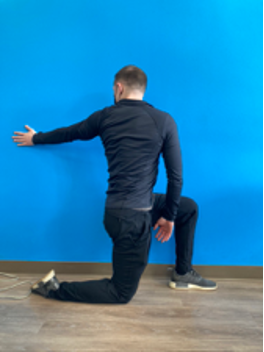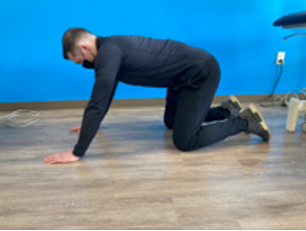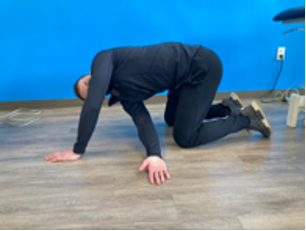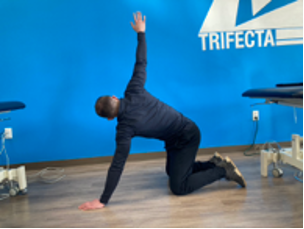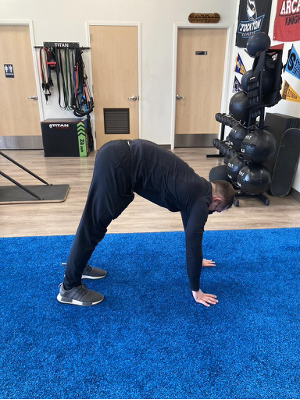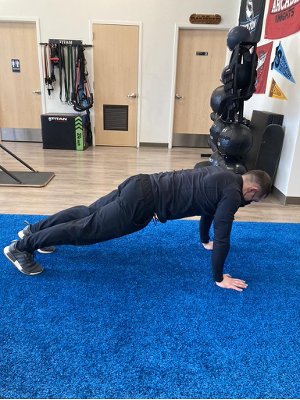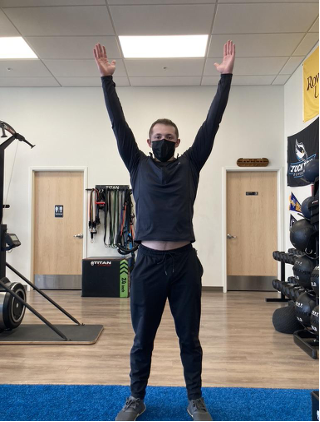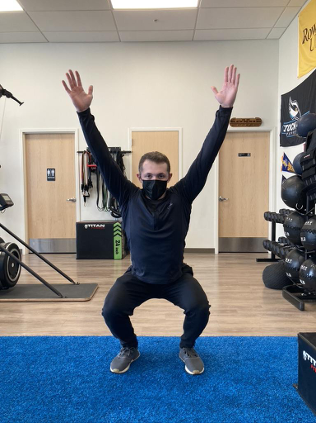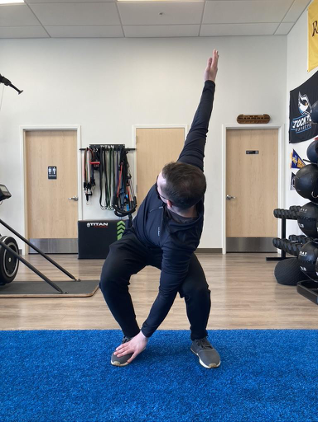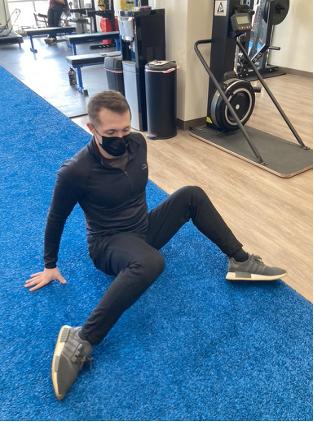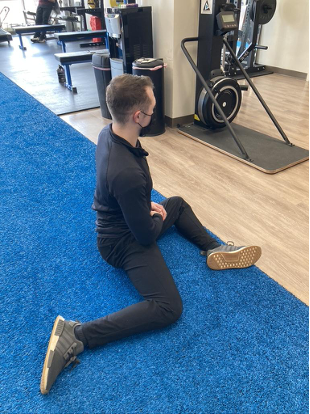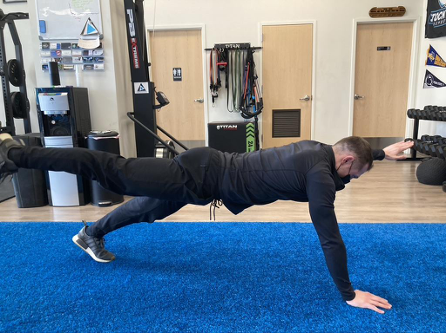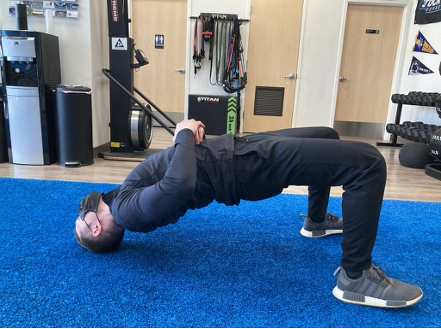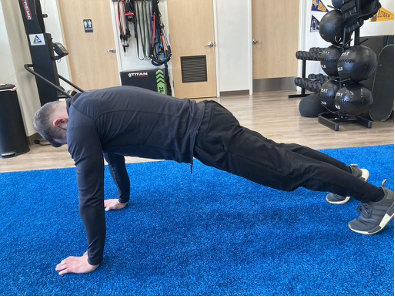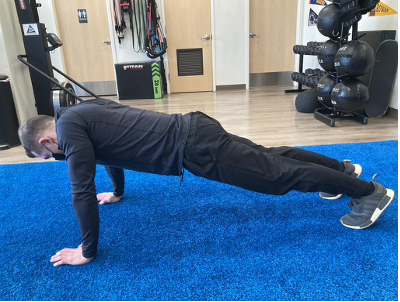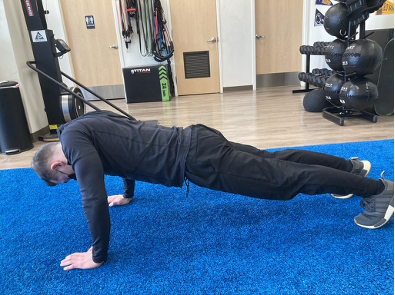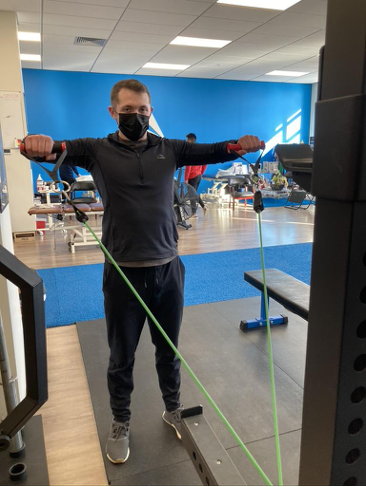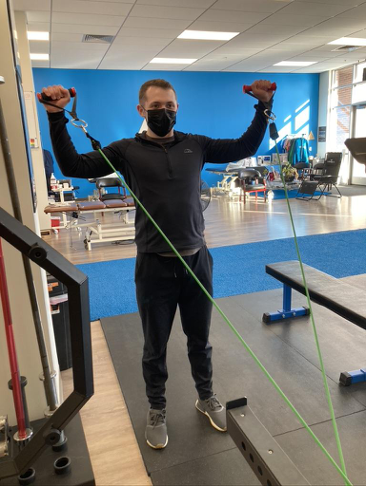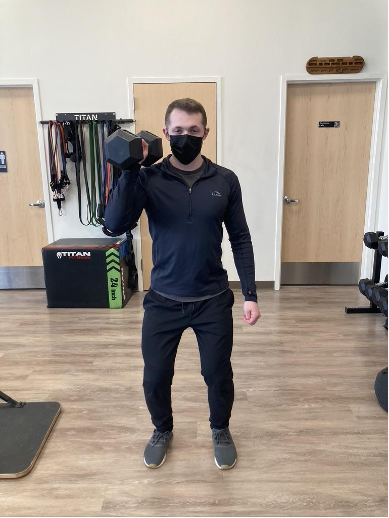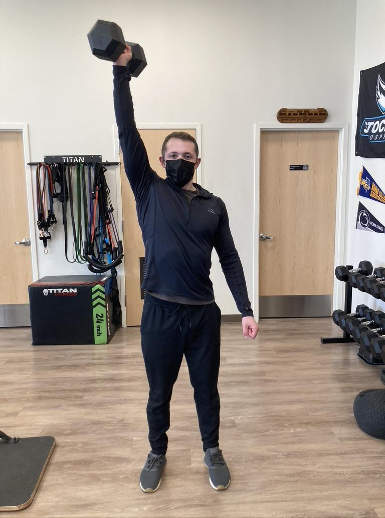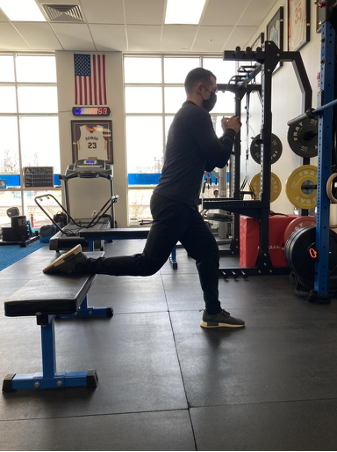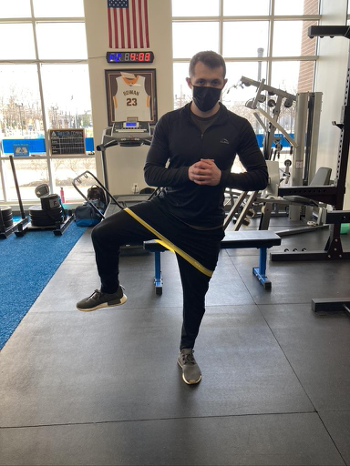Injury Prevention for the Wrestler: How to TAKEDOWN Neck, Shoulder, and Knee Injuries
Attention wrestlers, coaches, and parents! Wrestling season comes with intense preparation, humbling hardships, grueling victories, and unfortunately, injuries. If you’re reading this blog, maybe you’re the devoted parent of a wrestler or you’re a wrestler yourself looking for ways to improve your skills while reducing your risk of injury. Regardless, look no further than this blog as we’ll be taking you through a top to bottom informational read about some of the most common injuries in wrestlers and how to avoid them through diligent preventative exercise. Let’s take down these injuries so we can take down our opponents!
First and foremost, when talking about injury prevention, it is important to understand when injuries typically occur so that the provided injury prevention strategies can be put into context. A majority of acute injuries happen during preseason and postseason. At both the collegiate and high school levels, most injuries occur in the neutral position during takedown-type activities with the defensive wrestler being at greater risk of injury. To prevent injury during the pre-season, coaches should ensure that all athletes are progressing in strength, plyometric, and sport-specific activities with diligence and consideration toward the long-term health of the athletes. Many injuries that occur during the post-season may be related to inappropriate in-season training goals, inadequate diet, or athlete “burnout.” We’re going to cover all of the bases by providing exercises and additional training goals that can be incorporated into any wrestling team’s practice room to prevent injuries all year round.
While we’ve highlighted some common wrestling injuries and some exercises that can help you avoid them, keep in mind that injuries can vary based on intensity, training volume, the skill level of the wrestler, and the style of wrestling. All information in this blog will be focused on traditional folkstyle wrestling.
Common Injuries and Mechanism
Neck Injuries:
Neck injuries account for approximately 1-8% of all injuries incurred per year in wrestling. Wrestlers often carry high loads of force through their neck or are forced into extreme end ranges of motion, and as a result, can injure their neck during practice or matches. The most common positions where this occurs are positions where the wrestler has been thrown on top of their shoulder or head, causing their neck to absorb loads greater than the surrounding cervical structures can tolerate. Examples of maneuvers where cervical injuries may occur include, but are not limited to, neck bridging, ankle picks, blast doubles, and dumps. Generally, scrambling situations and any takedown from a neutral position open up the opportunity for an upper-body injury to occur. When a neck injury occurs, most commonly they’re classified underneath the name cervical sprain/strain.
Shoulder Injuries:
Different from many other sports, wrestling often requires extended periods of upper-extremity weight-bearing, which places a great deal of stress on the shoulder joint. A recent prospective study showed shoulder injuries to be the most common injury in high school wrestling populations, at 24% of the total injuries reported. Rotator cuff strains are the most common shoulder injury in wrestling, followed by acromioclavicular joint sprains, and shoulder dislocation/subluxation.
Knee Injuries:
Knee injuries are the most commonly occurring injuries in wrestlers. Prospective studies report the incidence of knee injuries upwards of 44% of all injuries. Knee injuries typically occur during the takedown or bottom positions where high opposing forces occur between wrestlers to one or both legs. For example, the wrestler on bottom may plant their lead leg forward to explode upward while the opponent grabs and tugs on the lead leg to prevent an escape. Situations like this pose risk to collateral ligaments, the meniscus, patella, and ACL. Common knee injuries include medial, lateral collateral ligament and ACL sprains, meniscal tears, and suprapatellar bursitis.
Preventative Exercises
While injuries cannot always be avoided, there are plenty of exercises one can do to reduce the risk of injury. Starting from the neck down, we’ll take you through some of the top exercises to improve your craft while preventing the risk of injury throughout the season.
Mobility
While most wrestlers have excellent mobility due to the nature of their sport, mobility should still remain an integral part of training and should be incorporated into one’s warm-up as preparation for strengthening exercises and practices or matches. Included below are great mobility exercises to add to one’s warm-up targeting cervical, shoulder, and knee mobility.
Windmill
Thread the needle
Prone Swimmers
Kneeling thoracic extension
Inchworms
Couch Stretch
Overhead squat with rotation
90/90 Mobility
Strength
Strength is no doubt a key component to overtaking one’s opponents, however not all strength exercises are created equal. Cervical strengthening regimens often miss endurance-based exercises targeting deep neck flexor muscles, which are important for stabilizing the cervical spine to reduce the risk of neck disorders. Additionally, shoulder exercises should target a variety of muscles including the rotator cuff and scapular muscles. While upper body strengthening is often performed by wrestlers, dynamic stabilization can be overlooked, which is key for training the shoulder muscles to fire in harmony, in order to create maximum shoulder stability in a variety of positions. Lastly, injury prevention for the knee consists of activation of muscles around the hip and knee joint including hip abductors, glutes, hamstrings, and quadriceps. Similar to the neck and shoulder, dynamic stability is an integral component of knee health.
With dynamic stabilization exercises, one can train the muscles around the hip and knee to fire at the correct times to provide maximum stability in the knee and minimize forces absorbed through the ligamentous structures. While wrestlers are no strangers to lower-body resistance training, emphasis on single leg strengthening exercises may be missed. Performing any lower body movements in a single-leg stance mimics takedowns. It is important to incorporate single-leg exercises into wrestlers’ resistance training programs to prepare the knee joint for explosive loading in scenarios where there is a lack of stability or predictability, such as in neutral stance when an opponent grabs the leg for a takedown and the wrestler must defend their leg in a “scramble.” Below are some examples of excellent strengthening exercises to add to one’s routine!
Chin Tucks
Chin tuck endurance holds
Bird Dog
Supine neck bridge
Serratus plus push up
Low to high row with external rotation
Bear Crawl
Push Press
Depth Drop Push Up
90/90 KB Dynamic Stabilization
Med Ball Overhead Toss
Elevated bulgarian split squat
Single Leg RDLs
Standing clamshells
Balance
Now that we have an understanding of what exercises we can do to protect our muscles, tendons, and ligaments from injury, we can explore some modifications to progress these exercises. After all, wrestling is done on a rubber or foam mat, both of which have a certain amount of “give” to them, making it a slightly unstable surface. Although wrestlers are accustomed to performing many different types of exercises and competitive techniques on the mat, the instability of the surface poses some risk of injury due to unequal transmission of forces. To mitigate the risk of injury due to the unstable nature of a mat, wrestlers should perform a variety of strengthening and balance exercises on unstable surfaces such as foam or bosu balls. As a result, the strength and power gains that are made during exercises using unstable surfaces are likely to translate directly into performance.
Plyometrics
Wrestling is a highly anaerobic sport, requiring maximal power and strength for explosive attacks during each match. Techniques are carried out at a variety of unpredictable angles and speeds, and in many different positions and circumstances. For example, a wrestler going for an escape may be lifted and mat-returned by their opponent onto one leg, when it is normally practiced landing on two legs. An unexpected landing like this may result in injury to the structures surrounding the knee and ankle joints, making it necessary for wrestlers to incorporate balance and plyometric training into their seasonal programs. Plyometrics are exercises involving repeated rapid stretching and contracting of muscles, such as what happens within the hip and knee extensors when one jumps in the air and lands. Modifying plyometric exercises to simulate match-intensity situations may be an effective way of preventing injuries by preparing the athlete for unknown perturbations during landing.
Participants of programs that incorporate balance and plyometric training demonstrate increased strength, power, proprioception, and neuromuscular control as well as reduced voluntary muscle activation timing, time to peak torque, and risk of reinjury. In collegiate wrestling, less than 25% of all injuries occur during the first period, suggesting that fatigue may contribute to an increased risk of injury. Neuromuscular fatigue decreases motor control, balance, and proprioception and may alter joint mechanisms. Therefore, plyometric injury prevention programs should focus on power endurance, which is the ability to maintain power output over an extended period. For example, it may be beneficial to program plyometric drills to last 2 minutes at a time at a given intensity with relatively short breaks in between rounds to mimic the constant high-force stresses that are placed on wrestlers during each two-minute period of a match. Be careful not to overload the joints with excessive repetitions, rather train with a volume that best simulates the intermittent forces approximately within the timeframe of a 6-minute match.
Knee to Feet Jumps
Matt Return Drill on One Leg
Jumping Scissor Lunges
Depth Jumps into Lateral Cut and Double Leg Shots
Interval Training
As mentioned previously, wrestlers must maintain a sound wrestling position and consistent power output for the full duration of a match to be victorious. This means that wrestlers must possess high anaerobic capacities and muscular conditioning to sustain repeated, explosive attacks or offensive techniques on an opponent. The stimulus needed to increase these athletic components is specific to the desired outcome, meaning that if wrestlers want to increase their anaerobic capacity, they must train using short bursts of high-intensity activity with rest periods that do not allow for full recovery. Interval training is a highly effective mode of training specific to these desired outcomes. Interval training requires repeated bouts of work, from seconds to minutes in duration, interrupted by rest intervals. Employing a work-to-rest ratio of 1:2 or 1:3 will develop fast-twitch muscle fibers by optimizing power output over the sport-specific period of time. For example, four 6-second sprints could be performed with 18 seconds of rest in between to mimic the rapid bursts of power that may happen during a scrambling or escape situation. These same principles can be applied to resistance and plyometric training in order to develop muscular strength, endurance, power, and balance within the time constraints and intensity of a wrestling match.
Med Ball Shot Defense Drill
Wheelbarrow Walks With Protraction
Banded Shot Offense Drill (tendonous ligamentous health)
With such a broad range of injuries incurred by wrestlers due to the high-force and unpredictable nature of the sport, we have done our best to present a comprehensive overview of the most common injuries that take athletes off the mat. We encourage coaches and wrestlers to refer back to these exercises year-round to maximize musculoskeletal health and minimize time off the mat in practice and competition due to injury.
References
Hewett TE, Pasque C, Heyl R, Wroble R. Wrestling injuries. Med Sport Sci. 2005;48:152-178. doi:10.1159/000084288
Grindstaff TL, Potach DH. Prevention of common wrestling injuries. Strength and Conditioning Journal. 2006;28(4):20-28. http://ezproxy2.library.drexel.edu/login?url=https://www.proquest.com/scholarly-journals/prevention-common-wrestling-injuries/docview/212585719/se-2?accountid=10559.
Durall CJ. Therapeutic exercise for athletes with nonspecific neck pain: a current concepts review. Sports Health. 2012;4(4):293-301. doi:10.1177/1941738112446138
Lee K, Onate J, McCann S, Hunt T, Turner W, Merrick M. The Effectiveness of Cervical Strengthening in Decreasing Neck-Injury Risk in Wrestling. Journal of sport rehabilitation. 2017;26(4):306-310. doi:10.1123/jsr.2015-0101
Kell, Robert MS, CSCS The Use of Interval Training to Condition for Wrestling, Strength and Conditioning:October 1997 - Volume 19 - Issue 5 - p 62-64
By: Arianna Gerber & Anthony Coposky




